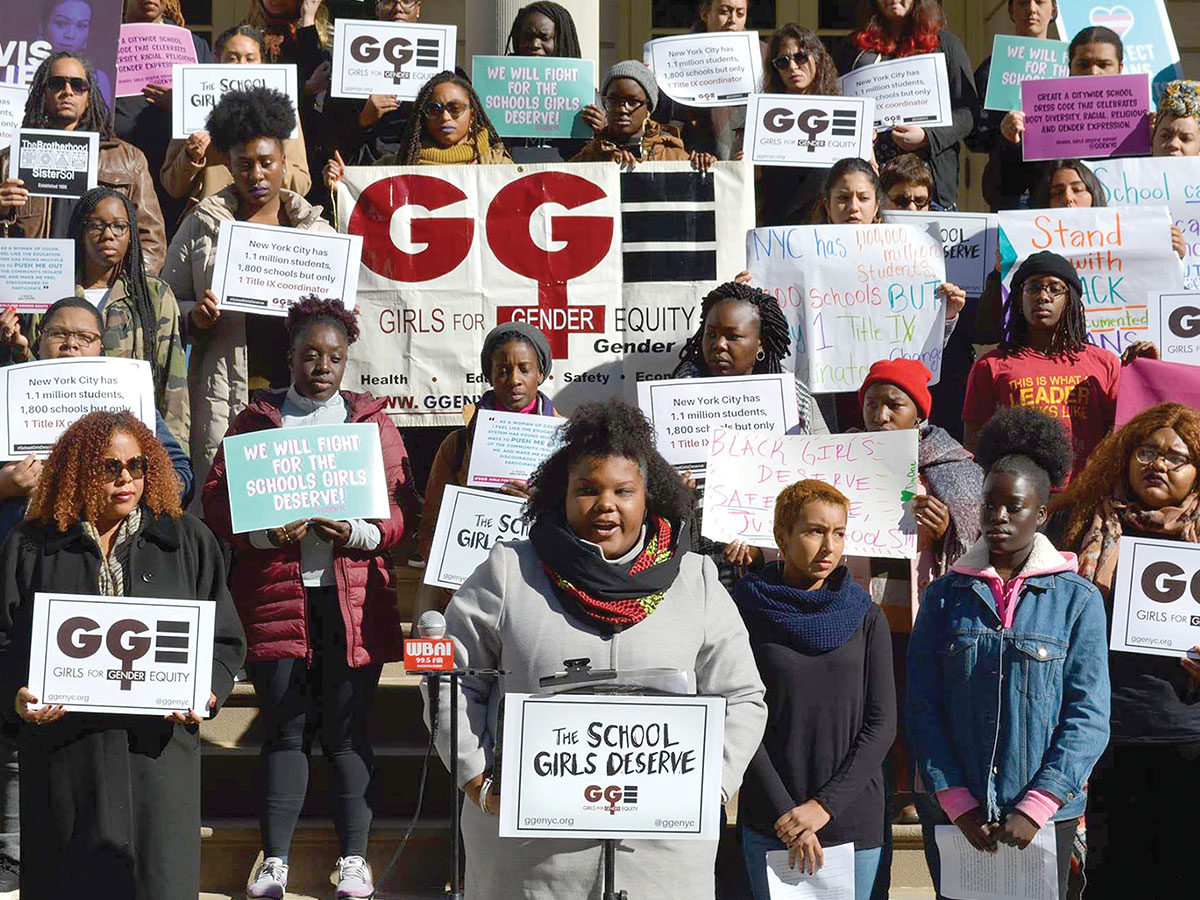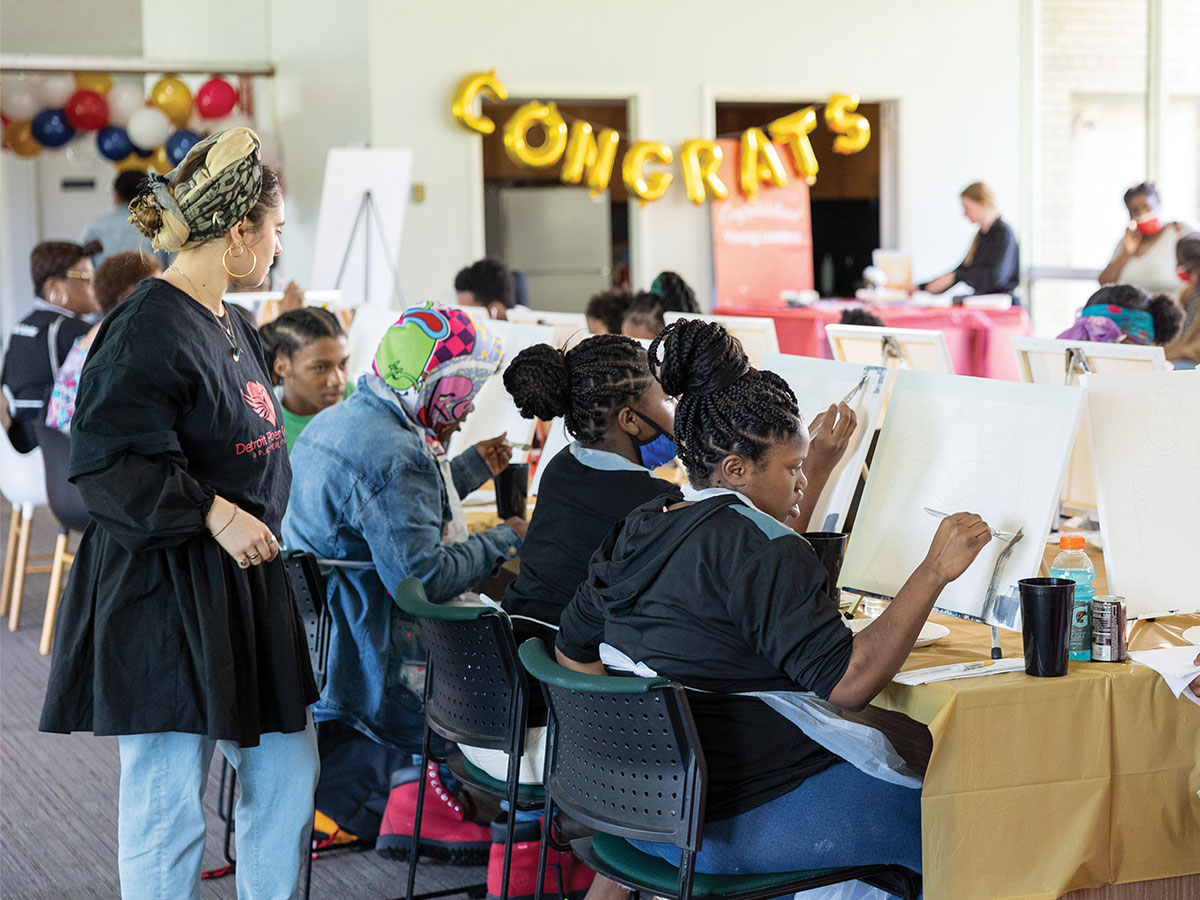Learning From Grantees: What we’re doing well, how we can improve

As part of our collective effort to continue learning, developing, and improving, US Energy Foundation (EF) committed to working with the Center for Effective Philanthropy (CEP) to conduct and act on the findings of their Grantee Perception Report and subsequent reports over the past 18 months. We are deeply grateful that the William and Flora Hewlett Foundation underwrote this project. We also thank the many grantees who shared their experience working with our foundation with CEP. Their perspectives have helped us learn what we’re doing well, and where there is room for improvement. By understanding our strengths and taking action to improve, we can continue advancing EF’s mission, vision, and values, and better serve grantees and the field.
In addition to an organization-wide report, CEP produced team-specific reports. Except where noted, we’re sharing the main themes of what we learned at the organizational level. EF leadership is committed to ensuring that key findings from the Grantee Perception Report are addressed and inform our organizational development.
Strengths
Ability to advance public policy in the field. Grantees said the organization has a strong understanding of the current policy and advocacy landscape and has a significant impact on public policy—whether it be through monetary or non-monetary support. Grantees also said that EF continually shows up as a knowledgeable leader in the field. (EF engages only in 501(c)(3)-compliant public policy activities.)
Grant size and dollars awarded relative to the time spent on the process. EF ranks highly regarding the median grant dollars awarded per process hour. This means our grantees spend a relatively small amount of time on process for each grant dollar. Grantees noted the relative lack of time-intensive administrative processes and time spent on grant proposals.
Reporting. Grantees consider EF’s reporting process to be adaptable to their circumstances. Some EF teams rate highly in terms of the straightforward nature of the reporting process. Grantees who work with those teams have expressed appreciation for the elimination of written reporting, regular contact with program officers as a means of narrative reporting, and a streamlined and standardized process for collecting financial reports.
Commitment to diversity, equity, and inclusion (DEI) both internally and externally. While this feedback varies across teams, grantees have noticed EF’s increased commitments to DEI. They said this can be seen externally through EF’s transparent commitments to DEI, and through funding to and partnerships with, equity groups. There also has been increased recognition of the need for, and benefits of, increased staff diversity to reflect our values and the communities we serve. Receiving this feedback was reassuring that we are on the right track. However, we recognize that DEI is an ongoing area of growth for EF. We know much more needs to be done.
Areas for Growth
In the following key areas where grantees identified there is room for growth, we immediately started making adjustments and embedding what we learned into our ongoing organizational efforts to be better partners. Below, we share some examples of actions we are taking.
Adjusting grant length, amount, and scope. Grantees want more unrestricted, multi-year grants that ensure longer-lasting support and set project scope. Grantees ask that EF increase the amount of general operating support funds that are distributed to the field. This change would add capacity to the organizations, give grantees more time to focus on their work, and provide more financial certainty and security. Multi-year grants also would reduce the administrative burdens for both grantees and EF staff.
Example of EF action. We are drafting a multi-year grant policy focused on qualifying criteria for and how to process these types of grants. Once approved, we will implement the plan and capture ways to continue improving in this area.
Creating a better overall grantee lifecycle experience. Grantees have identified challenges throughout the grantee lifecycle experience. These includes lack of transparency, unclear information around policies and procedures during the grant lifecycle, having inconsistent experiences with Program staff, and changing points of contact. Feedback also includes the need to have open conversations among grantees, consultants, and staff about resource needs, clarity about the grantee selection process, and ensuring that the process to receive money is both streamlined and clear.
Example of EF action. This month, we launched a new Grants Management System, built on the Salesforce platform. This should improve grantee engagement from beginning to end. We also are codifying policies and procedures, growing our staff to ensure a smoother process, and creating a more unified approach to employee training. This will help ensure that staff are well equipped to help improve the grantee experience.
Improving relationships, communication, and transparency. Grantees expressed a desire for generative, two-way relationships. These include more information sharing about strategy, goals, and progress, as well as emerging challenges. In particular, they seek more open, honest, and clear communication. This will lead to a better understanding of EF’s goals and decisions, grantee organizations, grantee communities, opportunities, and challenges.
Example of EF action. Sharing the findings of the Grantee Perception Report and our responses to the feedback with funders, grantees, and the public is one immediate step we’re taking to improve transparency. This was our first CEP assessment in more than five years, and the findings have been invaluable to our growth. We are excited to now have a baseline and to conduct these surveys on a more regular basis to track our progress.
Again, we’re incredibly grateful to our funders and grantees for your continued partnership. We are committed to using the Grantee Perception Report findings to further our learning and organizational growth.
Our CEP survey process, analysis, follow-up planning, and communications involved a cross-team collaboration among Energy Foundation departments. Those serving the process included Senior Regional Director, Northeast, Emily Enderle; Senior Director of Grants Management Tiauna George; Senior Program Associate, Federal, Nicolette Santos; Senior Vice President and Chief Operating Officer Brian Stanley; Senior Manager, Programs, Elizabeth Thomas; Program Director, Clean Transportation, Aminah Zaghab. Results and next steps were reviewed and approved by our management team—CEO Jason Mark; Senior Vice President, Strategic Partnerships, Jane L. Breyer; and Brian Stanley.
This post was originally published by Energy Foundation.



